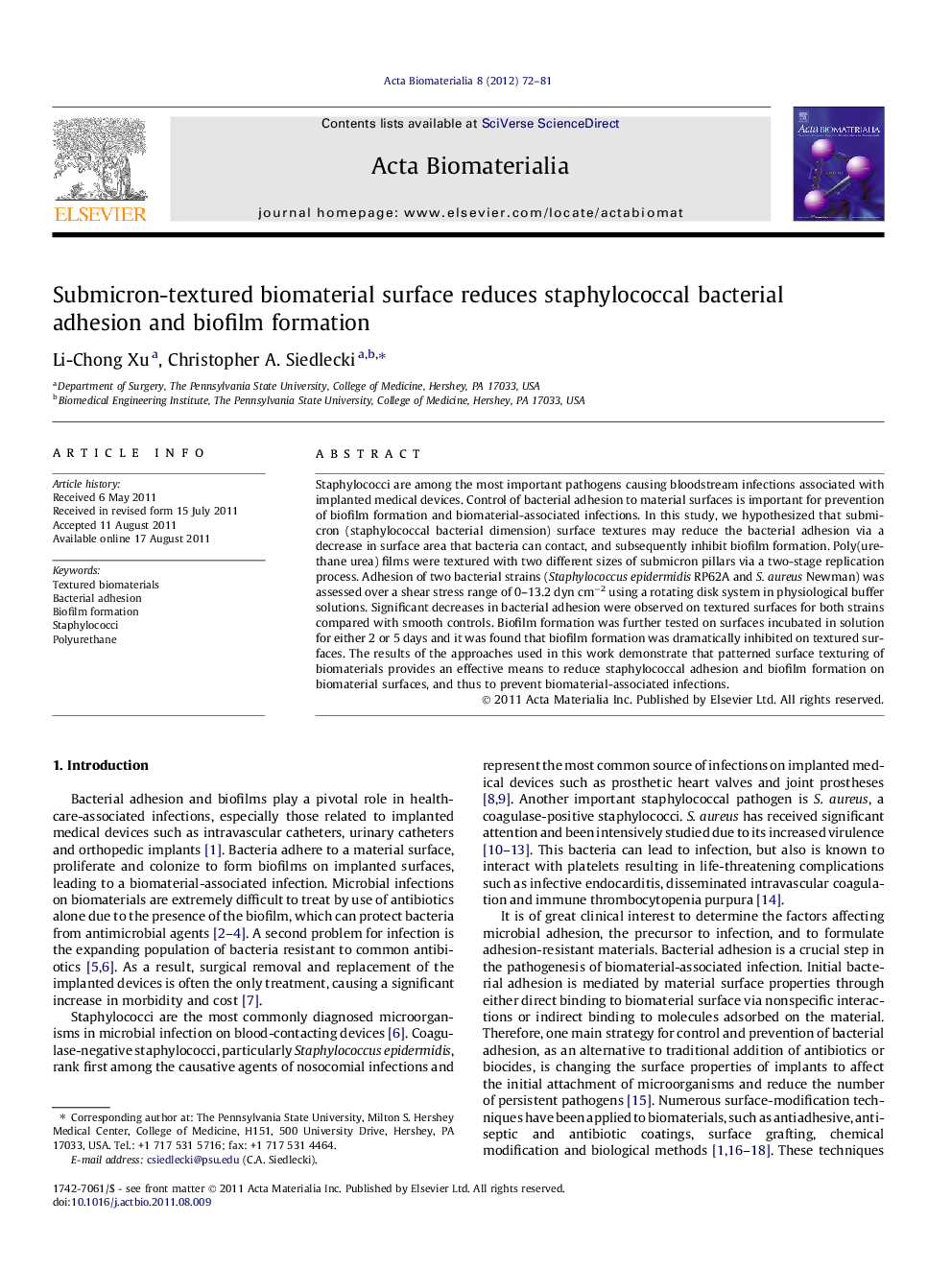| Article ID | Journal | Published Year | Pages | File Type |
|---|---|---|---|---|
| 10160060 | Acta Biomaterialia | 2012 | 10 Pages |
Abstract
Staphylococci are among the most important pathogens causing bloodstream infections associated with implanted medical devices. Control of bacterial adhesion to material surfaces is important for prevention of biofilm formation and biomaterial-associated infections. In this study, we hypothesized that submicron (staphylococcal bacterial dimension) surface textures may reduce the bacterial adhesion via a decrease in surface area that bacteria can contact, and subsequently inhibit biofilm formation. Poly(urethane urea) films were textured with two different sizes of submicron pillars via a two-stage replication process. Adhesion of two bacterial strains (Staphylococcus epidermidis RP62A and S. aureus Newman) was assessed over a shear stress range of 0-13.2 dyn cmâ2 using a rotating disk system in physiological buffer solutions. Significant decreases in bacterial adhesion were observed on textured surfaces for both strains compared with smooth controls. Biofilm formation was further tested on surfaces incubated in solution for either 2 or 5 days and it was found that biofilm formation was dramatically inhibited on textured surfaces. The results of the approaches used in this work demonstrate that patterned surface texturing of biomaterials provides an effective means to reduce staphylococcal adhesion and biofilm formation on biomaterial surfaces, and thus to prevent biomaterial-associated infections.
Related Topics
Physical Sciences and Engineering
Chemical Engineering
Bioengineering
Authors
Li-Chong Xu, Christopher A. Siedlecki,
